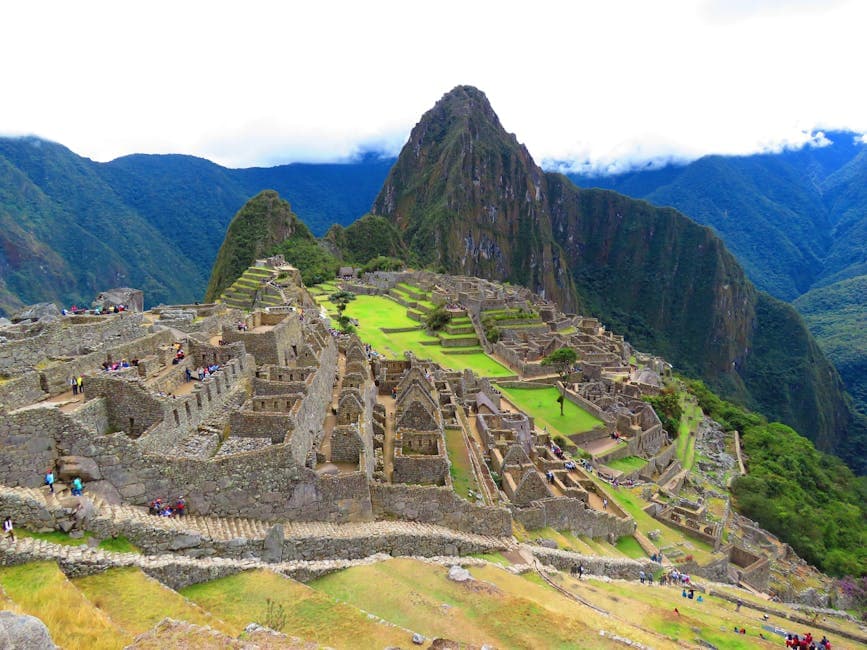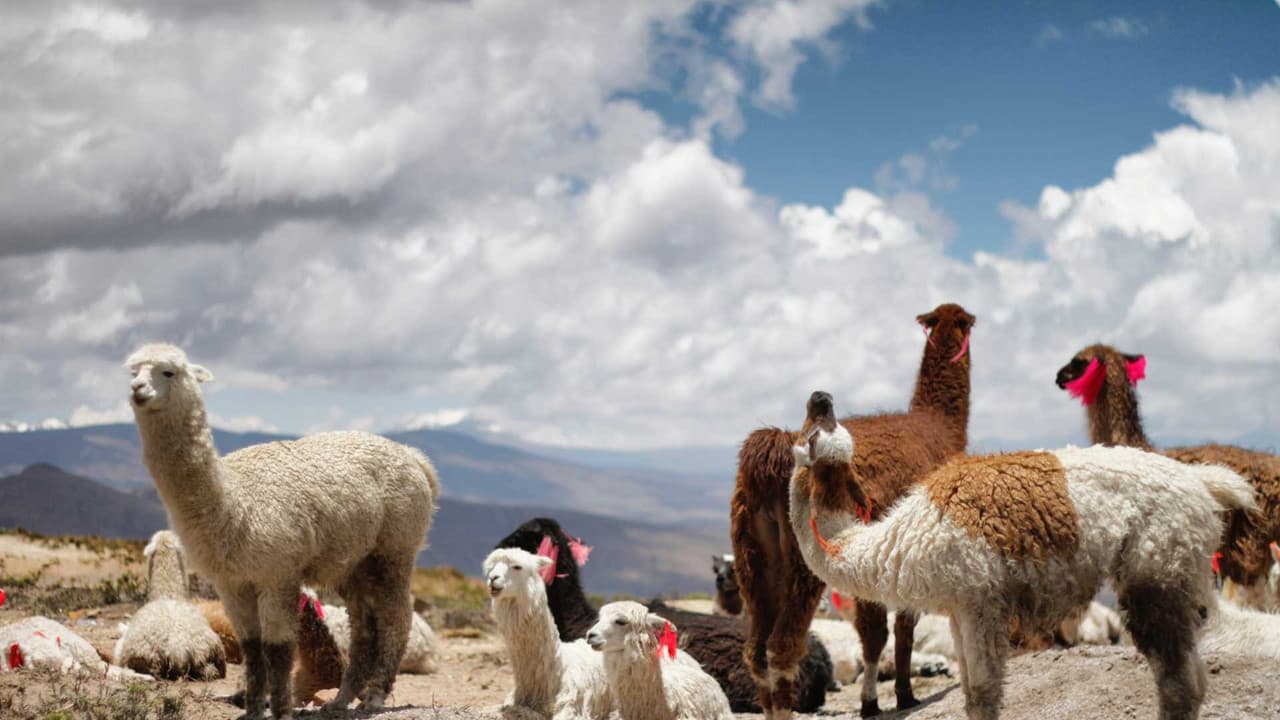Lucas Botzen
Founder & Managing Director
Last updated:
November 10, 2025
What is an Employer of Record in Peru?
View our Employer of Record servicesAn Employer of Record (EOR) in Peru legally hires employees on your behalf. This means you can build a team in Peru without setting up a local entity. An EOR handles all the legal and HR responsibilities. This includes payroll, taxes, benefits, and compliance with Peruvian labor laws. For companies looking to hire in Peru, a provider like Rivermate can simplify the process.
How an Employer of Record (EOR) Works in Peru
Using an EOR in Peru follows a straightforward process. You find the talent, and the EOR takes care of the rest.
Here is how it works:
- You select your candidate. You manage the hiring and interview process to find the right person for your team.
- The EOR drafts a local contract. The EOR creates a compliant employment agreement that meets all of Peru's labor regulations.
- The EOR onboards your new employee. They handle all the necessary paperwork and legal requirements to officially hire your employee in Peru.
- You manage your employee's day-to-day work. Your team member works for you, following your company's direction and goals.
- The EOR manages HR and payroll. The EOR processes salary payments, withholds taxes, and manages benefits according to Peruvian law. You receive a single monthly invoice for the total employment cost.
Why use an Employer of Record in Peru
An EOR helps you expand into Peru quickly and compliantly. It removes the major administrative burdens of international hiring. You can focus on growing your business while the EOR ensures you follow all local rules.
Here are some key benefits:
- Enter the market faster. You can hire employees in days instead of the months it might take to establish a legal entity in Peru.
- Ensure full compliance. Peruvian labor law is complex. An EOR understands the local regulations, from employment contracts to termination requirements, protecting you from legal risks. You can find official information on labor regulations from Peru's Ministry of Labor and Promotion of Employment (https://www.gob.pe/mtpe).
- Reduce administrative work. The EOR manages payroll, tax withholdings, and social security contributions. This saves you time and resources.
- Offer competitive benefits. An EOR can provide your employees with access to health insurance and other benefits, helping you attract and retain top talent.
- Simplify the process. You avoid the cost and complexity of setting up a subsidiary. This makes hiring in Peru a more flexible and cost-effective option.
Responsibilities of an Employer of Record
As an Employer of Record in Peru, Rivermate is responsible for:
- Creating and managing the employment contracts
- Running the monthly payroll
- Providing local and global benefits
- Ensuring 100% local compliance
- Providing local HR support
Responsibilities of the company that hires the employee
As the company that hires the employee through the Employer of Record, you are responsible for:
- Day-to-day management of the employee
- Work assignments
- Performance management
- Training and development
Costs of using an Employer of Record in Peru
Rivermate's transparent pricing model eliminates complexity with a single, competitive monthly fee per employee. Unlike traditional PEO providers, our pricing in Peru includes comprehensive HR support, benefits administration, compliance management, and access to our proprietary dashboard for real-time workforce analytics. No hidden costs, no setup fees—just straightforward pricing that scales with your business needs while ensuring full legal compliance in Peru.
Employ top talent in Peru through our Employer of Record service
Book a call with our EOR experts to learn more about how we can help you in Peru







Book a call with our EOR experts to learn more about how we can help you in Peru.
Trusted by more than 1000 companies around the globe
Hiring in Peru
Hiring in Peru can be a great move for your company. The country has a growing pool of skilled professionals, especially in tech and finance. But before you start, it's important to understand the local labor laws. This guide will walk you through the key things you need to know.
Employment contracts & must-have clauses
In Peru, it's best practice to have a written employment contract. While verbal agreements can be valid for permanent positions, written contracts are mandatory for fixed-term, part-time, and foreign employees. A clear, written agreement protects both you and your new hire.
Your contracts should be in Spanish and include the following:
- Your company's and the employee's full details: This includes legal names and identification.
- Job title and responsibilities: Be clear about the role and what you expect.
- Start date: The official first day of employment.
- Compensation and benefits: Detail the salary, bonuses, and any other benefits.
- Working hours: Specify the daily and weekly work schedule.
- Probation period: If there is one, it must be in the contract.
- Termination conditions: Outline the reasons and procedures for ending the contract.
Probation periods
Probation periods in Peru are a way to see if a new hire is a good fit. The standard probation period is three months.
You can extend this for certain roles:
- Up to six months for skilled workers or positions of trust.
- Up to one year for managers and highly specialized roles.
Any extension beyond the standard three months must be justified in writing in the employment contract. During the probation period, you can terminate the contract without cause, but you can't dismiss someone for discriminatory reasons.
Working hours & overtime
The standard workweek in Peru is 48 hours, typically spread over six days. This usually means an eight-hour workday.
Here’s how overtime works:
- First two hours: Paid at a 25% premium over the regular hourly rate.
- Additional hours: Paid at a 35% premium.
- Work on rest days or public holidays: This is compensated at a 100% premium, which means triple pay.
Overtime should be voluntary, and it's important to keep accurate records of all extra hours worked.
Public & regional holidays
Employees in Peru are entitled to paid time off for national holidays. In 2025, there are 18 national holidays.
Here is a list of the national holidays for 2025:
| Date | Holiday |
|---|---|
| January 1 | New Year's Day |
| April 17 | Maundy Thursday |
| April 18 | Good Friday |
| May 1 | Labor Day / May Day |
| June 7 | Battle of Arica |
| June 29 | St. Peter and St. Paul |
| July 23 | Peruvian Air Force Day |
| July 28 | Independence Day |
| July 29 | Independence Day (day 2) |
| August 6 | Battle of Junín |
| August 30 | Santa Rosa De Lima |
| October 8 | Battle of Angamos |
| November 1 | All Saints' Day |
| December 8 | Feast of the Immaculate Conception |
| December 9 | Battle of Ayacucho |
| December 25 | Christmas Day |
Hiring contractors in Peru
Hiring independent contractors in Peru can be a flexible way to bring in specialized skills. However, it's crucial to classify them correctly to avoid legal trouble.
An independent contractor should:
- Have autonomy over their work schedule and methods.
- Use their own tools and equipment.
- Be free to work for other clients.
If you treat a contractor like an employee by controlling their work and integrating them into your company structure, you risk misclassification. This can lead to penalties, including back pay for employee benefits and social security contributions.
To protect your business, always have a clear service agreement that outlines the scope of work, payment terms, and the independent nature of the relationship.
An Employer of Record (EOR) can help you navigate these complexities. An EOR can ensure you classify workers correctly and handle all the legal and HR responsibilities that come with hiring in Peru. This lets you focus on growing your team without the compliance headaches.

Compensation and Payroll in Peru
In Peru, handling compensation and payroll means understanding a few key rules. You pay your team in Peruvian Sol (PEN). It is important to get the details right to keep your employees happy and stay on the right side of the law.
Payroll cycles & wage structure
You typically pay employees on a monthly basis. Direct bank deposits are the most common and secure way to pay your team.
A unique part of paying employees in Peru involves two extra months of salary each year. These are not optional bonuses. They are required by law.
- 13th Month Salary: You pay this in July for Peru's Independence Day.
- 14th Month Salary: You pay this in December for Christmas.
Each of these payments equals one month's salary.
Overtime & minimums
The standard work week in Peru is 48 hours, often spread over six days. Any work beyond this is overtime. You must pay a higher rate for these extra hours.
- First two hours: 125% of the normal hourly rate.
- After two hours: 135% of the normal hourly rate.
As of 2022, the minimum wage is PEN 1,025 per month.
Employer taxes and contributions
As an employer, you pay several taxes and contributions for your employees. These are on top of their regular salary.
| Contribution | Rate | Notes |
|---|---|---|
| Health Insurance (EsSalud) | 9% of employee's salary | This is the public health insurance system. |
| Severance Fund (CTS) | About 9.72% of annual salary | You deposit this into a special account for the employee. It's paid in two parts in May and November. |
| Family Allowance | 10% of the minimum wage | You pay this for each child under 18 an employee has. |
| Life Insurance | Varies | This is required from the first day of employment. |
| Work Risk Insurance | Varies | This applies to companies in high-risk industries. |
Employee taxes and deductions
Employees also have deductions taken from their pay.
| Deduction | Rate | Notes |
|---|---|---|
| Pension Fund | Around 13% | Employees choose between the national system (ONP) or a private fund (AFP). |
| Income Tax | 8% to 30% | This is a progressive tax. The more an employee earns, the higher the rate. The first PEN 36,050 of annual income is exempt. |
How an Employer of Record, like Rivermate can help with payroll taxes and compliance in Peru
An Employer of Record (EOR) manages monthly payroll calculations, employer contributions, and tax filings in-country on your behalf. Rivermate handles registrations, payslips, statutory reporting, and remittances to authorities so you stay compliant with local rules and deadlines—without setting up a local entity. Our specialists monitor regulatory changes and ensure correct rates, thresholds, and caps are applied to every payroll cycle.
Loading calculator...
Benefits and Leave in Peru
In Peru, your employee benefits package and leave policies are key to attracting and keeping great talent. The law sets minimum requirements, but many companies offer more to stand out. Think of the legal requirements as your starting point. From there, you can build a benefits plan that fits your team and your budget.
Statutory leave
Peruvian law provides several types of paid leave for employees.
- Annual Leave: Employees get 30 calendar days of paid vacation each year after completing one year of service. They must take at least 15 days, and can exchange the other 15 for cash.
- Sick Leave: You must pay for the first 20 days of an employee's sick leave. After that, the social security system covers it for up to 245 days. A medical certificate is required.
- Maternity Leave: Female employees receive 98 days of paid maternity leave, usually split with 49 days before birth and 49 days after. This can be extended by 30 days for multiple births.
- Paternity Leave: New fathers get 10 consecutive days of paid leave.
- Adoption Leave: An employee who adopts a child is entitled to 30 days of paid leave.
Public holidays & regional holidays
Peru has a number of national public holidays. In 2025, these are:
| Holiday | Date |
|---|---|
| New Year's Day | January 1 |
| Maundy Thursday | April 17 |
| Good Friday | April 18 |
| Labor Day | May 1 |
| Battle of Arica | June 7 |
| St. Peter and St. Paul | June 29 |
| Peruvian Air Force Day | July 23 |
| Independence Day | July 28 |
| Independence Day (day 2) | July 29 |
| Battle of Junín | August 6 |
| Santa Rosa de Lima | August 30 |
| Battle of Angamos | October 8 |
| All Saints' Day | November 1 |
| Feast of the Immaculate Conception | December 8 |
| Battle of Ayacucho | December 9 |
| Christmas Day | December 25 |
Typical supplemental benefits
While the law mandates certain benefits, many employers offer more to stay competitive.
| Statutory Benefits | Non-Statutory (Supplemental) Benefits |
|---|---|
| 30 days of paid annual leave | Life insurance |
| Two annual bonuses (July and December) | Private health insurance for employee and family |
| Compensation for Length of Service (CTS) | Food, housing, or car allowances |
| Social security contributions (health and pension) | Education allowances |
| Monthly family allowance for employees with children | Workplace accidental insurance |
How an EOR can help with setting up benefits
An Employer of Record (EOR) simplifies offering benefits in Peru. Instead of navigating complex local laws on your own, an EOR handles it for you.
Here's how an EOR can help:
- Ensure Compliance: An EOR understands Peru's labor laws and makes sure your benefits packages are fully compliant.
- Save Time: You avoid the administrative work of setting up and managing benefits.
- Offer Competitive Packages: EORs can provide access to attractive benefits plans that help you attract top talent.
- Simplify Payroll: All benefits contributions are managed through the EOR's payroll system.
Using an EOR lets you focus on growing your business, knowing that your team's benefits and leave are handled correctly.
How an Employer of Record, like Rivermate can help with local benefits in Peru
Rivermate provides compliant, locally competitive benefits—such as health insurance, pension, and statutory coverages—integrated into one EOR platform. We administer enrollments, manage renewals, and ensure contributions and withholdings meet country requirements so your team receives the right benefits without added overhead.
Termination and Offboarding in Peru
Letting an employee go in Peru requires careful handling. The country's labor laws protect employees, so you need to follow a specific process. If you end a contract without a valid reason, you may have to pay severance. The process involves providing written notice and ensuring you pay all outstanding wages and benefits.
Notice periods
When you terminate an employment contract, you must provide written notice. The length of the notice period depends on the reason for dismissal.
- For misconduct: You must give at least six calendar days of notice.
- For lack of capability: A 30 calendar day notice period is required.
During the notice period for misconduct, the employee has the opportunity to present a defense. If an employee resigns, they need to provide 30 days' notice.
Severance pay
In Peru, severance pay is required if you dismiss an employee without a justified cause. Employees terminated for reasons like misconduct or poor performance are not entitled to severance pay. The amount of severance can be up to 12 months' pay for employees who are let go without justification.
Your final payment to the employee should include all earned wages, payment for any unused vacation time, and any applicable severance.
How Rivermate handles compliant exits
When you partner with an Employer of Record like Rivermate, we manage the entire offboarding process for you. We make sure that every termination is handled in full compliance with Peruvian labor laws.
Here’s how we help:
- Legal Compliance: We navigate the complexities of local employment laws to ensure every step is compliant.
- Documentation: We handle all the necessary paperwork, including the written notice of termination.
- Final Pay: We calculate and process the final payment, including wages, unused vacation, and any required severance.
- Guidance: We provide expert advice on how to handle terminations, minimizing your legal risks.
We take on the administrative burden of offboarding, so you can focus on running your business.
Visa and work permits in Peru
Navigating the visa and work permit process in Peru is a key step to expanding your team in the country. It’s a system with its own set of rules and timelines. Understanding these upfront will help you manage your hiring process and set clear expectations for your new employees. This guide breaks down what you need to know about employment visas and business travel compliance in Peru.
Employment visas & sponsorship realities
When you hire a foreign national to work in Peru, they will need a work visa. The most common option is the Resident Worker Visa, which is tied to an employment contract with a Peruvian company. This visa is typically issued for one year and can be renewed. For shorter-term projects, a Temporary Work Visa allows someone to work in the country for up to 183 days.
An Employer of Record (EOR) can sponsor work visas for your employees in Peru. This means the EOR becomes the legal employer and handles the necessary paperwork and compliance. To sponsor a foreign worker, the EOR must be registered with Peru's National Superintendence of Migration.
Here are some practical realities of visa sponsorship in Peru:
- The 80/20 Rule: Peruvian law requires that at least 80% of a company's workforce be Peruvian nationals. This applies to an EOR as well.
- Contract Approval: The employment contract must be approved by the Peruvian Ministry of Labor before the visa application can be submitted.
- What an EOR can sponsor: An EOR can typically sponsor Resident Worker Visas and Temporary Work Visas for employees who have a formal job offer.
- What an EOR can't sponsor: An EOR generally cannot sponsor visas for independent contractors or freelancers. They also cannot sponsor a visa for someone who does not have a confirmed role with one of their clients.
The process of obtaining a work visa generally takes one to two months. It involves submitting the employment contract for approval, followed by the visa application itself.
Business travel compliance
For short-term business trips to Peru, a business visa is required for citizens of many countries. However, individuals from some nations may be exempt if their country has a specific agreement with Peru.
A business visa allows for activities like:
- Attending meetings and trade fairs
- Exploring business opportunities
- Signing contracts
It's important to understand the limitations of a business visa:
- No paid work: This visa does not permit you to carry out paid work or earn income from a Peruvian source.
- Limited stay: The maximum stay on a business visa is typically up to 183 days within a 12-month period.
- Specific exceptions: There are exceptions for receiving fees as a company director or for consulting services that do not exceed 30 days.
To apply for a business visa, you will generally need to provide a letter from your company explaining the purpose and duration of your trip, along with proof of financial support. Always check with the nearest Peruvian consulate for the most current requirements before traveling.
How an Employer of Record, like Rivermate can help with work permits in Peru
Navigating work permits can be complex and time‑sensitive. Rivermate coordinates the entire process end‑to‑end: determining the right visa category, preparing employer and employee documentation, liaising with local authorities, and ensuring full compliance with country‑specific rules. Our in‑country experts accelerate timelines, minimize refusals, and keep you updated on each milestone so your hire can start on time—legally and confidently.
Frequently asked questions about EOR in Peru
About the author

Lucas Botzen
Lucas Botzen is the founder of Rivermate, a global HR platform specializing in international payroll, compliance, and benefits management for remote companies. He previously co-founded and successfully exited Boloo, scaling it to over €2 million in annual revenue. Lucas is passionate about technology, automation, and remote work, advocating for innovative digital solutions that streamline global employment.
